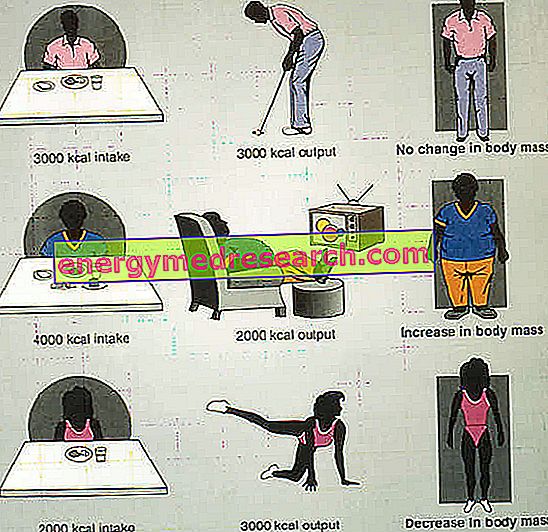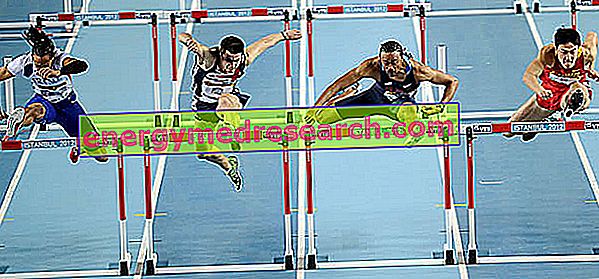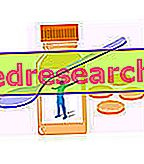By Dr. Stefano Casali
The total daily energy expenditure is given by the sum of:
- Basal metabolism (60-70%)
- Thermogenesis induced by physical activity (20-30%)
- Dietal-induced thermogenesis (10%)
Basal metabolism
It represents the energy expenditure at complete physical and psycho-sensorial rest:
- Relaxed patient
- Awake about half an hour after a restful sleep of at least 8 hours
- In thermoneutral state (22 ° -26 °)
- 12-14 hours after taking the last meal
- Soft lighting and absence of auditory stimuli
Physical activity-induced thermogenesis
It represents the energy expenditure required to perform any type of physical activity; is determined by the type, duration and intensity of the work performed.
Dietal-induced thermogenesis
It stands out in
- Mandatory (60-70%): necessary for the processes of digestion, absorption, transport and assimilation of ingested food;
- Optional (30-40%): stimulation of the sympathetic by ingesting carbohydrates and nerve foods

LARN : recommended daily intake levels of energy and nutrients | ||||
Energy requirements (Kcal / day) | Protein (G / day) | Lipids (G / day) | Carbohydrates (G / day) | |
males (18-29 years) | 2543 | 65 | 72 | 421 |
Females (18-29 years) | 2043 | 51 | 57 | 332 |
Average basal metabolism of Italian women and men | ||||
Men | Women | |||
Average | Range | Average | Range | |
7983 kJ / 24h 1900 kcal / 24h | from 6320 to 12502 from 1500 to 2976 | 6127 kJ / 24h 1458 Kcal / 24h | from 3465 to 8744 from 825 to 2081 | |
Measurement techniques of energy expenditure
- Direct calorimetry
- Indirect calorimetry
Direct calorimetry
It is performed by placing the subject in a calorimetric chamber, thermally insulated, so as to be able to evaluate the heat that he emanates by radiation, convection, conduction and evaporation; this heat is detected by a water-cooled heat exchanger.
Indirect calorimetry
It allows the evaluation of energy expenditure by measuring O2 consumption and CO2 production.
Lipids | Carbohydrates | Protein | |
Organic caloric value | 9 kcal / g | 4 kcl / g | 4 kcal / g |
QR (respiratory quotient) | 0.710 | 1, 000 | 0, 835 |
Caloric equivalent of O2 | 4, 683 | 5, 044 | 4, 650 |
Digestibility coefficient (CD)
Actually digested and absorbed amount of food compared to that taken with the diet:
- Average carbohydrate CD 97%
- 95% average lipid CD
- Average protein CD 92%
Respiratory quotient
QR of carbohydrates
C6 H12 O6 + 6 O2 → 6 CO2 + 6 H2O
QR = 6 CO2 / 6 O2 = 1
QR of lipids
C16 H32 O6 + 23 O2 → 16 CO2 + 16 H2O
QR = 16 CO2 / 23 O2 = 0.696
Protein QR
Albumin → C72 H112 N2 O2 2S + 77O2
Urea → 63 CO2 + 38 H2O + SO3 + 9CO (NH2) 2
QR = 63 CO2 / 77 O2 = 0.818
Factors affecting the QR
- Diabetes and prolonged fasting
- Intense and brief muscular work
- Recovery phase from muscular work
- Hyper- and hypo-ventilation
Maximum oxygen consumption (VO2 max)
When oxygen consumption no longer increases in response to an increase in energy demand it is said that maximum oxygen consumption is reached.
To understand what maximum oxygen consumption is, consider a person who starts running. If it starts from a state of rest, energetic mechanisms are set in motion faster than aerobic ones (ie those that use oxygen) to compensate for the initial energy deficiency, given the slowness of aerobic mechanisms. Mechanisms ATP-CP (creatine phosphate) and glycolysis (ie carbohydrates burned without the use of oxygen) are used; after a few minutes (from two to four depending on the subject's training) the aerobic mechanisms have adapted to the energy demand and the state of equilibrium begins. During this state the athlete consumes oxygen and this consumption is constant. If the effort increases (as can be seen by making the subject run on a treadmill with increasing slope inclinations) oxygen consumption also increases. At some point the aerobic mechanism will not be able to provide the required energy and will start producing lactic acid. However, the athlete's oxygen consumption will still increase until there is an increase in energy demand: the athlete has reached the maximum oxygen consumption (VO2max). It is verified that the athlete is able to prolong the effort in conditions of VO2max for about 7 'and that the situation corresponds to concentrations of lactate in the blood ranging from 5 to 8 mmol (conventionally 6.5).
In more practical terms:
the maximum oxygen consumption corresponds to the maximum aerobic power.
Bibliography



